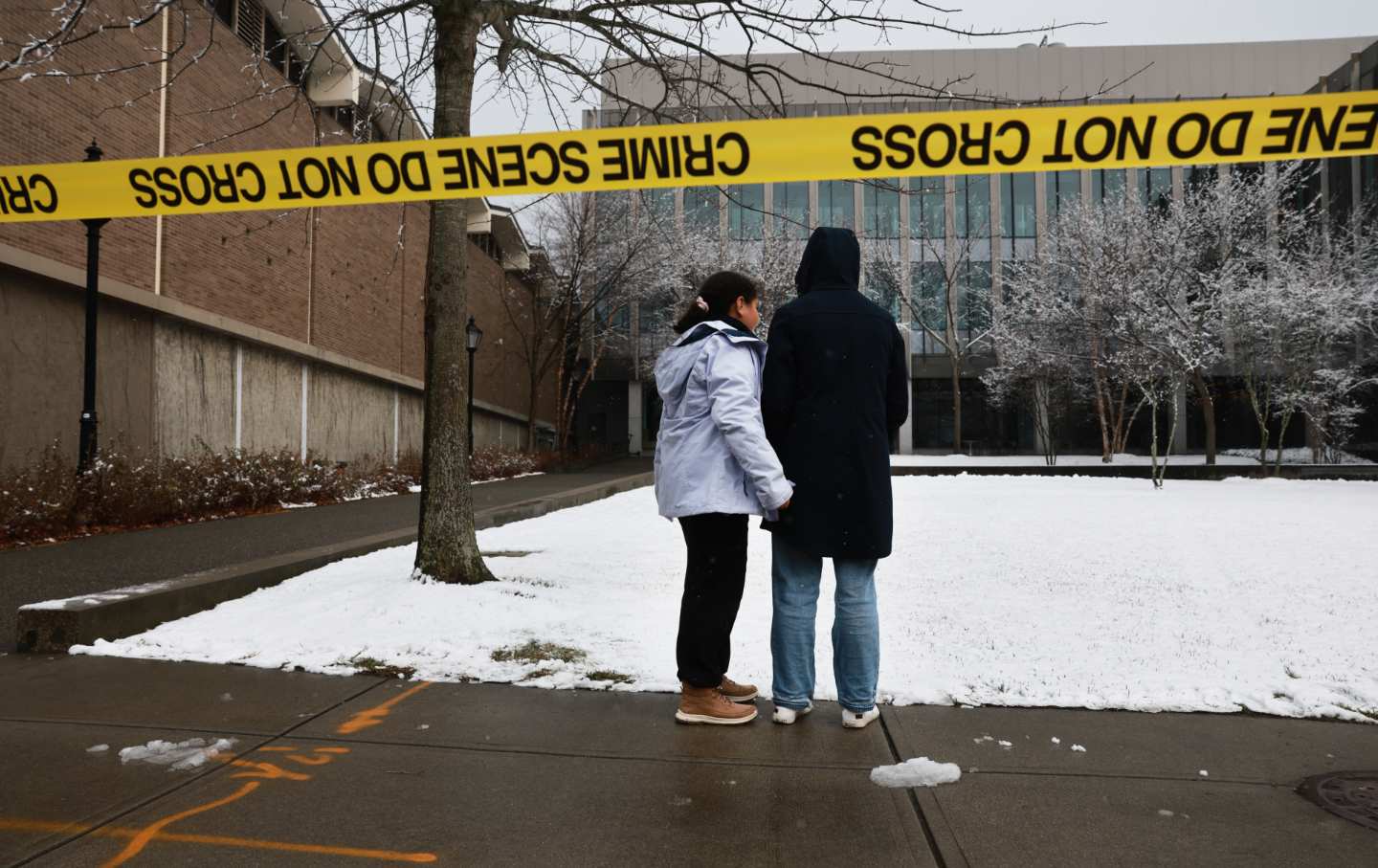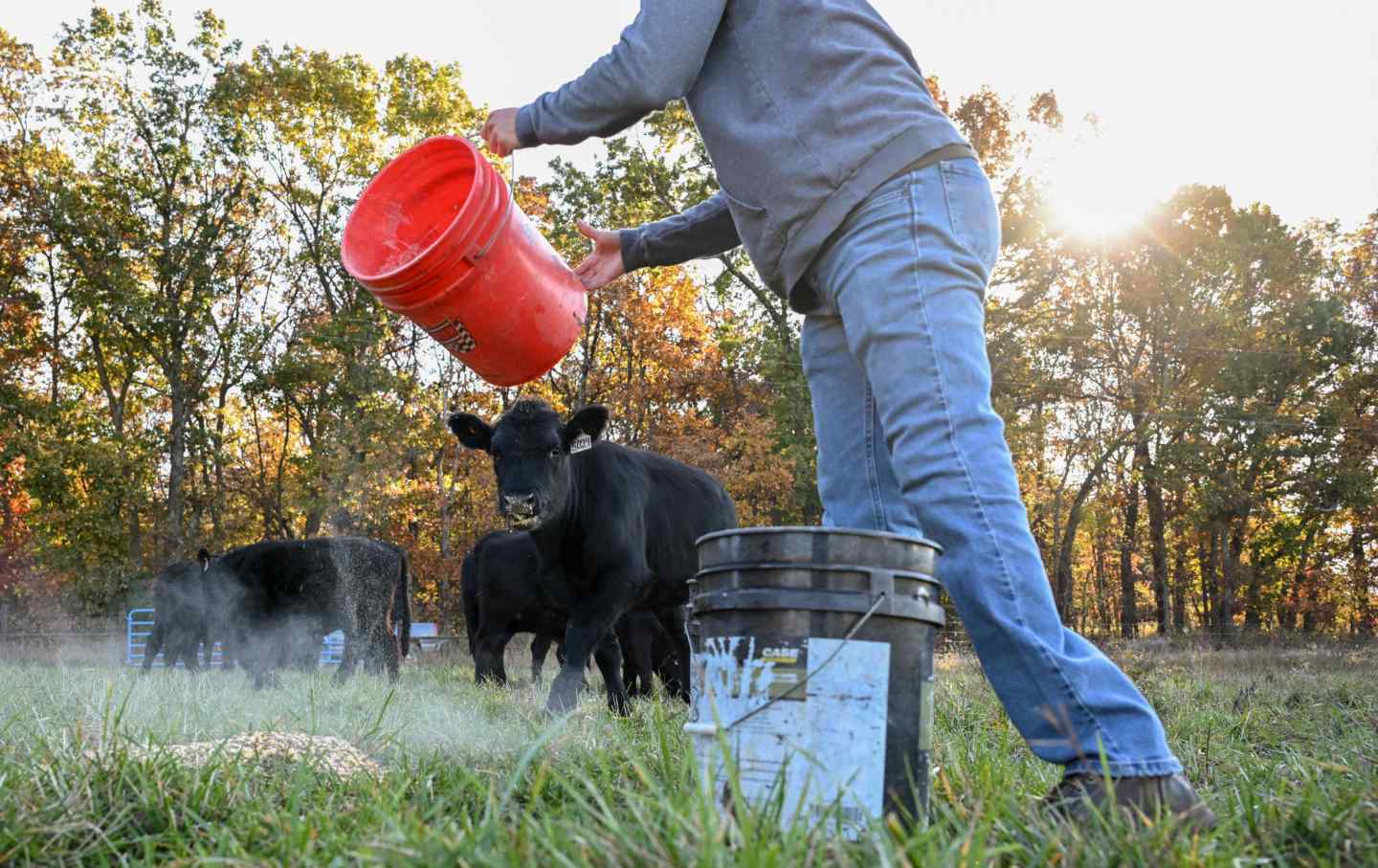4-Day School Weeks Are a Raw Deal for Kids—and Their Parents
The money-saving measure happening in districts throughout the country leaves too many kids without anything to do—or in some cases, anything to eat.

Late last month, while I was reporting a story on the election season in Arizona, I met a voter registration volunteer named Nick Ethier at a farmers market on the outskirts of Phoenix. Ethier had a 14-year-old daughter, who was enrolled in middle school in the community of Buckeye, part of the Liberty School District. Liberty was one of six districts in the Phoenix Metropolitan area to vote down school bond requests for supplemental dollars to keep its schools running properly. While the 12 districts that voted in favor of the bond request have been able to maintain their education standards, the six that didn’t are facing all kinds of budgetary shortfalls. Liberty has chosen to deal with this by adopting a four-day school week.
Arizona ranks 48th among the 50 states in per-pupil education spending, committing only 66 percent of the national average to its students’ schooling. Like many states, it is facing a looming education crisis. Arizona is underinvesting in basic educational needs, and, instead of raising taxes or bond revenue, it is letting districts take shortcuts on education that will likely have a calamitous impact down the road. Neighboring Nevada, which, along with Oklahoma, is one of the only two states spending even less per kid on K-12 education than Arizona, is in a similar predicament.
Every Friday, Nick’s daughter just sits at home. On those days, Nick says, she does “nothing.” She gets no homework and has no online educational activities. Instead, the school district has simply rolled back its responsibilities to kids on Fridays. In theory, shorter school weeks could be a force for good—if, say, children had the resources and inclination to spend their spare days roaming the great outdoors or visiting museums. But in practice, less school time often means more time online, more stress for parents, and less food security, since large numbers of children rely on free school breakfasts and lunches for much of their daily sustenance.
It turns out that Liberty’s “solution” to its funding crisis is by no means unique. In fact, the number of school districts adopting four-day weeks is on the rise in post-pandemic America. Districts that pay low wages to teachers and to support staff have increasingly struggled to hire enough personnel, and anti-government sentiment, especially in conservative rural areas, has made it more likely that voters will reject bond measures to properly fund their schools.
The four-day week is marketed as a way for small school districts to save money—and to lure teachers in without having to pay them decent salaries that would properly compensate for a five-day workweek. In Oklahoma, districts are now allowed to schedule fewer than 180 days per year of classroom instruction. That’s two full weeks per year less school time than, say, a German student gets. Over the course of 12 years of schooling, that adds up to nearly six months less education. The phenomenon is seen disproportionately in Western states, particularly in smaller districts, and in regions of the country that have historically underinvested in education infrastructure.
Not surprisingly, the results aren’t exactly uplifting. A RAND study from 2021 found that these four-day weeks impacted student learning, reducing the amount of improvement in English and math that students chalked up each year. A number of other studies have reached similarly bleak conclusions. As it turns out—all the hype about Zoom and remote learning notwithstanding—most kids, generally speaking, need to be in classrooms, listening to real flesh-and-blood teachers and surrounded by real flesh-and-blood students, in order to fully absorb their lessons.
Schools across the US emerged from pandemic school shutdowns, lasting anywhere from months to years, plagued by an educational epidemic of chronic absenteeism. The basic notion that school was mandatory rather than optional was shattered by the school closure policies. Even in a best-case scenario, it will take years for the culture of absenteeism and its consequences to fully run their course. In light of this crisis, schools should be doing everything in their power to increase the number of days per year that students receive an education. Instead, many penny-pinching school districts are stampeding in the opposite direction.
It’s desperately shortsighted, not just for the kids and their well-being but also for the economic security of the communities involved. Studies have found that when districts adopt the four-day school week, it soon leads to measurable declines in home values in these districts, as parents shun buying there in favor of places that still have five-day weeks.
For Nick, trying to register young adults to vote as the election nears, there is an obvious connection between the decline in educational involvement and the broader crisis of civic disengagement. Some young men coming out of high schools “don’t seem to care about voting,” he says. “They couldn’t care less. Voter registration? They tune out and walk on by. Generally, the guys between high school age and 35 to 40, if they don’t have kids, they don’t care. They don’t care about politics or voting, or even know what’s going on. It’s that machismo, youthful ignorance, whatever you want to call it.”
Disobey authoritarians, support The Nation
Over the past year you’ve read Nation writers like Elie Mystal, Kaveh Akbar, John Nichols, Joan Walsh, Bryce Covert, Dave Zirin, Jeet Heer, Michael T. Klare, Katha Pollitt, Amy Littlefield, Gregg Gonsalves, and Sasha Abramsky take on the Trump family’s corruption, set the record straight about Robert F. Kennedy Jr.’s catastrophic Make America Healthy Again movement, survey the fallout and human cost of the DOGE wrecking ball, anticipate the Supreme Court’s dangerous antidemocratic rulings, and amplify successful tactics of resistance on the streets and in Congress.
We publish these stories because when members of our communities are being abducted, household debt is climbing, and AI data centers are causing water and electricity shortages, we have a duty as journalists to do all we can to inform the public.
In 2026, our aim is to do more than ever before—but we need your support to make that happen.
Through December 31, a generous donor will match all donations up to $75,000. That means that your contribution will be doubled, dollar for dollar. If we hit the full match, we’ll be starting 2026 with $150,000 to invest in the stories that impact real people’s lives—the kinds of stories that billionaire-owned, corporate-backed outlets aren’t covering.
With your support, our team will publish major stories that the president and his allies won’t want you to read. We’ll cover the emerging military-tech industrial complex and matters of war, peace, and surveillance, as well as the affordability crisis, hunger, housing, healthcare, the environment, attacks on reproductive rights, and much more. At the same time, we’ll imagine alternatives to Trumpian rule and uplift efforts to create a better world, here and now.
While your gift has twice the impact, I’m asking you to support The Nation with a donation today. You’ll empower the journalists, editors, and fact-checkers best equipped to hold this authoritarian administration to account.
I hope you won’t miss this moment—donate to The Nation today.
Onward,
Katrina vanden Heuvel
Editor and publisher, The Nation








